I have always been curious about the taste of raw salmon. Raw salmon is a popular ingredient in sushi and sashimi dishes, but I have never had the chance to try it.
I wonder what it tastes like and how it differs from cooked salmon.
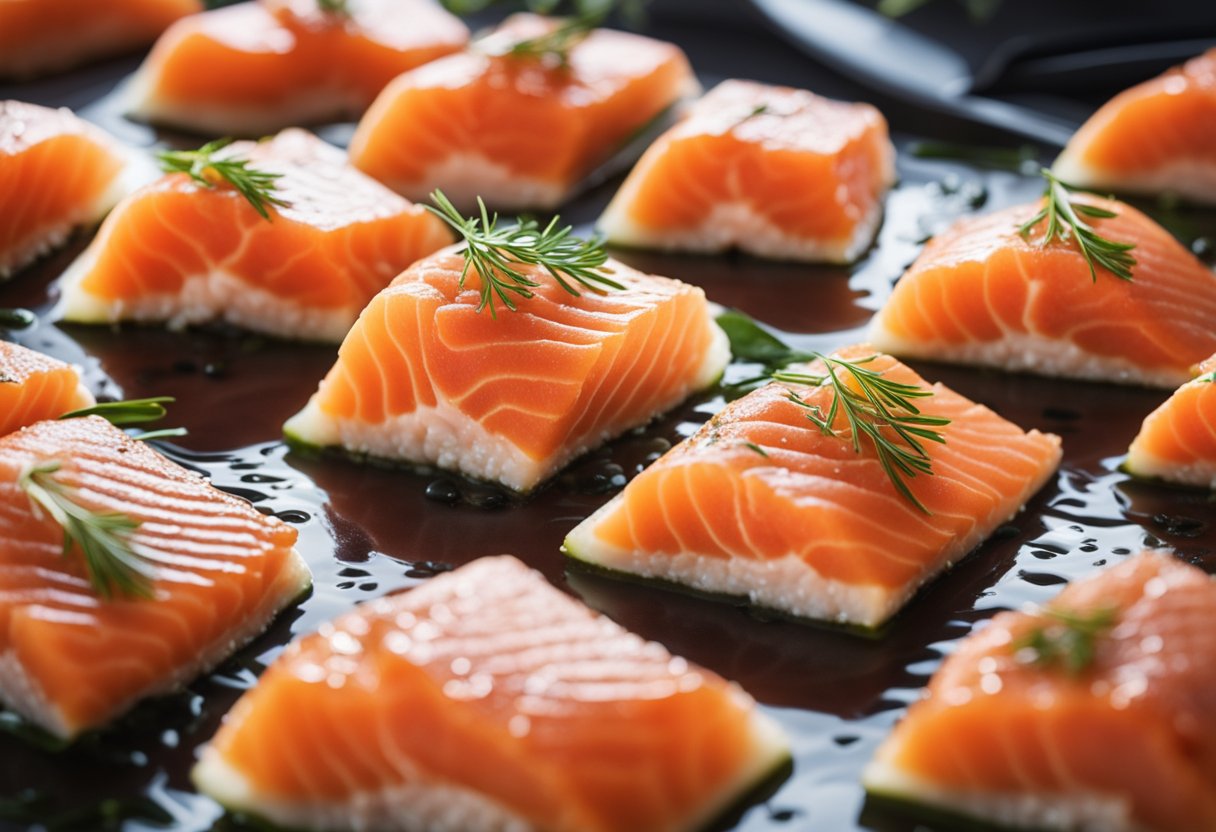
Raw salmon has a delicate taste that is slightly sweet and has a touch of saltiness.
The flavor of raw salmon depends on where the salmon was caught, with wild salmon having a richer taste compared to farmed salmon.
When you eat raw salmon, you will notice that it has a clean taste and a slight hint of ocean flavor. The texture of raw salmon is firm and buttery, and it has a creamy and silky surface.
Key Takeaways
- Raw salmon has a delicate taste that is slightly sweet and has a touch of saltiness.
- The flavor of raw salmon depends on where it was caught, with wild salmon having a richer taste compared to farmed salmon.
- The texture of raw salmon is firm and buttery, and it has a creamy and silky surface.
Understanding Raw Salmon
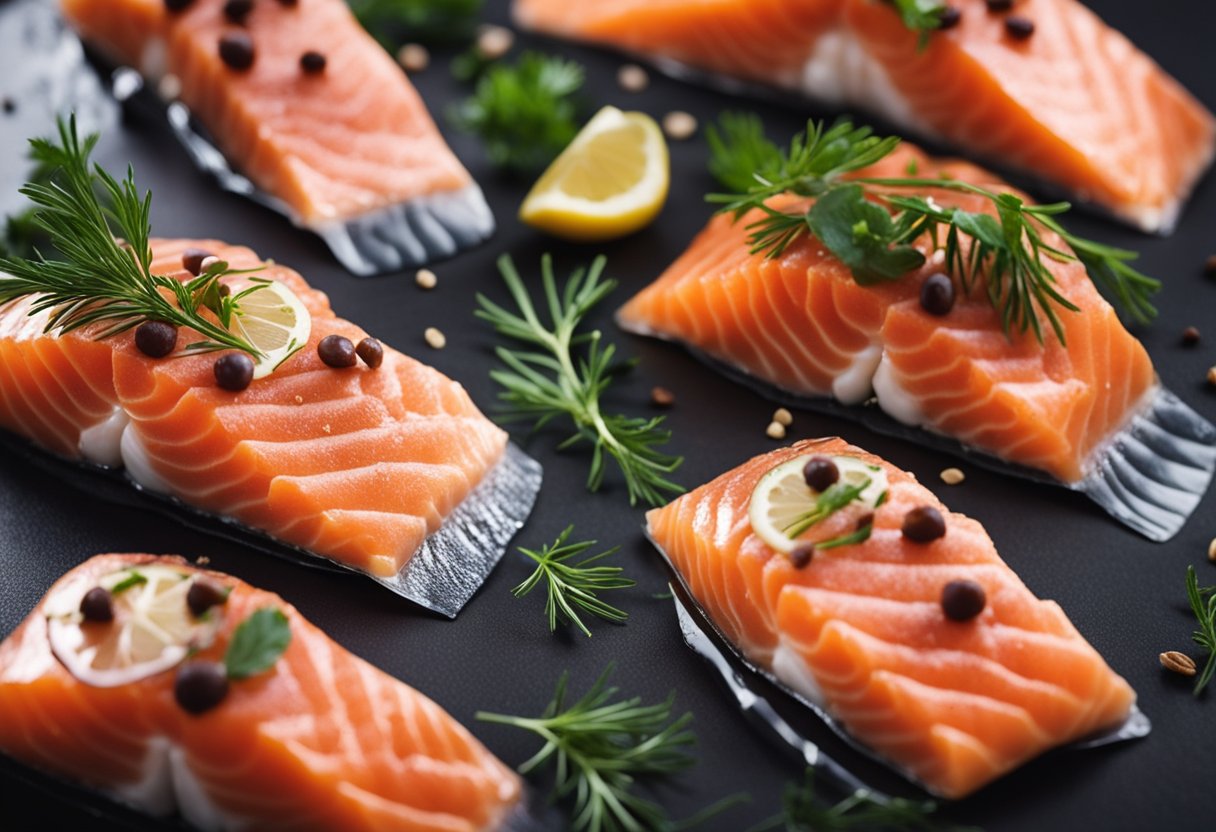
As a seafood lover, I have always been intrigued by the taste of raw salmon. Raw salmon is a popular ingredient in many dishes, including sushi, sashimi, and ceviche.
It has a unique taste that is different from cooked salmon.
Salmon is a type of fish that belongs to the family Salmonidae. There are many species of salmon, including pink salmon, sockeye salmon, king salmon, chum salmon, coho salmon, and Pacific salmon.
Each species has its own unique taste and texture.
When it comes to raw salmon, the taste can vary depending on the species of fish and the source of the salmon. Fresh raw salmon has a slightly fishy and buttery taste.
It has a pleasant texture and appearance, making it a favored ingredient in many recipes.
It is important to choose fresh salmon from a reputable source. Wild-caught salmon is generally considered to be of higher quality than farmed salmon.
When purchasing salmon, look for firm flesh and a fresh smell. If you are buying frozen salmon, make sure it has been properly stored and thawed before consuming.
Canned salmon is also an option for those who prefer the convenience of pre-cooked salmon. However, the taste and texture of canned salmon may be different from fresh or raw salmon.
In summary, raw salmon has a unique taste that is different from cooked salmon. The taste can vary depending on the species of fish and the source of the salmon.
When purchasing salmon, choose fresh salmon from a reputable source and look for firm flesh and a fresh smell.
Taste Profile of Raw Salmon
As a culinary enthusiast, I have tried raw salmon on several occasions, and I can confidently say that it has a unique taste profile.
Raw salmon has a delicate flavor that is slightly sweet with a touch of saltiness. The taste of the fish can vary depending on where the salmon had thrived and the quality of the raw salmon.
Fresh raw salmon has a mild and buttery taste, which is why many people prefer its flavor when consumed raw.
The fish has a soft and smooth texture with a slightly firm texture that melts in your mouth due to its high-fat content.
However, it is important to note that good quality raw salmon should not have an overpowering fishy taste.
Some people describe the taste of raw salmon as similar to salted butter or a creamy texture. The fish has a rich and oily flavor that makes it a popular option for sushi and sashimi dishes.
However, the taste of raw salmon can be too strong for some people, especially those who are not used to eating raw fish.
Overall, raw salmon has a delicate flavor that is unique and distinct from other types of fish.
The taste of the fish is influenced by several factors, including the quality of the raw salmon, where it had thrived, and how it was prepared.
If you are a fan of sushi or sashimi, then raw salmon is definitely worth trying.
Texture of Raw Salmon
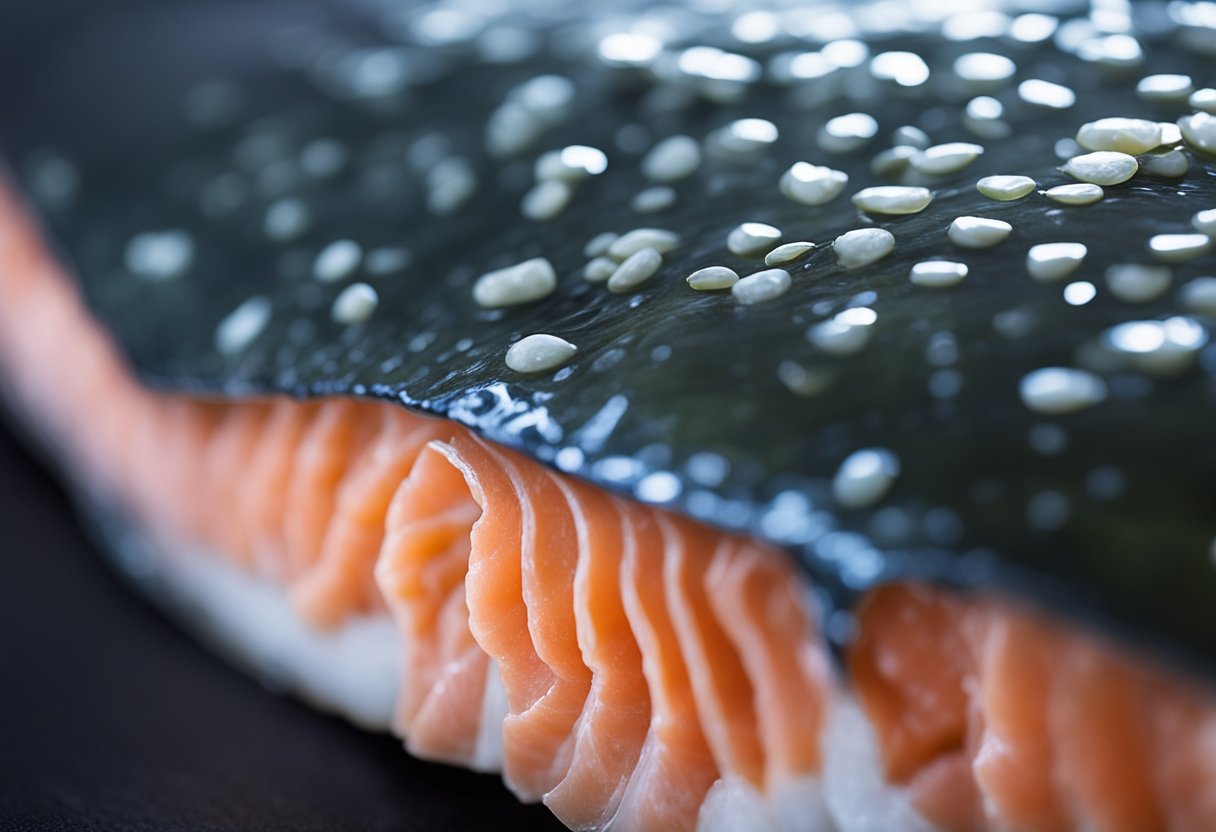
As one of the most delicate fishes, raw salmon has a unique texture that is silky, smooth, and tender.
The surface of the raw salmon is usually firm, with a creamy and buttery soft texture that melts in your mouth quite quickly.
The high-fat content of the fish contributes to its soft and smooth texture.
The texture of raw salmon can vary depending on the type of salmon and where it was caught.
For example, sockeye salmon is known for its meaty and firm texture, while pink salmon has a softer and more delicate texture.
The texture of raw salmon is also affected by factors such as the fish’s age, diet, and quality.
When it comes to cooking, the versatile texture of raw salmon makes it a popular choice for a variety of dishes.
It can be served raw in sushi or sashimi, or cooked in a variety of ways, such as grilled, baked, or poached.
The texture of raw salmon makes it easy to slice and dice, which is why it is a popular ingredient in sushi rolls.
In summary, the texture of raw salmon is soft, smooth, and creamy, with a buttery texture that melts in your mouth.
The texture can vary depending on the type of salmon and where it was caught, but overall, raw salmon is a versatile and delicious fish with a unique texture that makes it a popular ingredient in a variety of dishes.
Preparing and Eating Raw Salmon
When it comes to preparing and eating raw salmon, there are a few things to keep in mind. First and foremost, it is important to ensure that the salmon is fresh and of high quality.
This can help to ensure that the salmon tastes as good as possible and reduces the risk of any potential health hazards.
One popular way to prepare raw salmon is to make sushi or sashimi. Sushi is typically made by combining raw fish with rice and other ingredients, while sashimi is simply thinly sliced raw fish served on its own.
When making sushi or sashimi, it is important to use a sharp knife to ensure that the fish is sliced cleanly and evenly.
Another popular way to prepare raw salmon is to marinate it in a mixture of soy sauce, herbs, and other seasonings.
This can help to add flavor and texture to the fish, making it more enjoyable to eat. Some people also enjoy smoked salmon, which is typically prepared by smoking the fish over wood chips for several hours.
It is important to note that raw salmon can contain parasites, which can be harmful to human health.
To reduce the risk of parasitic infection, it is recommended to freeze raw salmon for at least 24 hours before consuming. This can help to kill any parasites that may be present in the fish.
When it comes to serving raw salmon, there are a variety of options. Some people enjoy serving it on a bed of rice with a side of wasabi and soy sauce, while others prefer to serve it on a salad with a variety of herbs and other seasonings.
Ceviche, a dish made with raw fish marinated in citrus juice, is another popular way to enjoy raw salmon.
Overall, raw salmon has a unique flavor and texture that can be enjoyed in a variety of ways.
Whether you prefer it in sushi, marinated, or smoked, there are plenty of options to choose from. Just be sure to take the necessary precautions to ensure that the fish is safe to consume.
Health and Safety Considerations
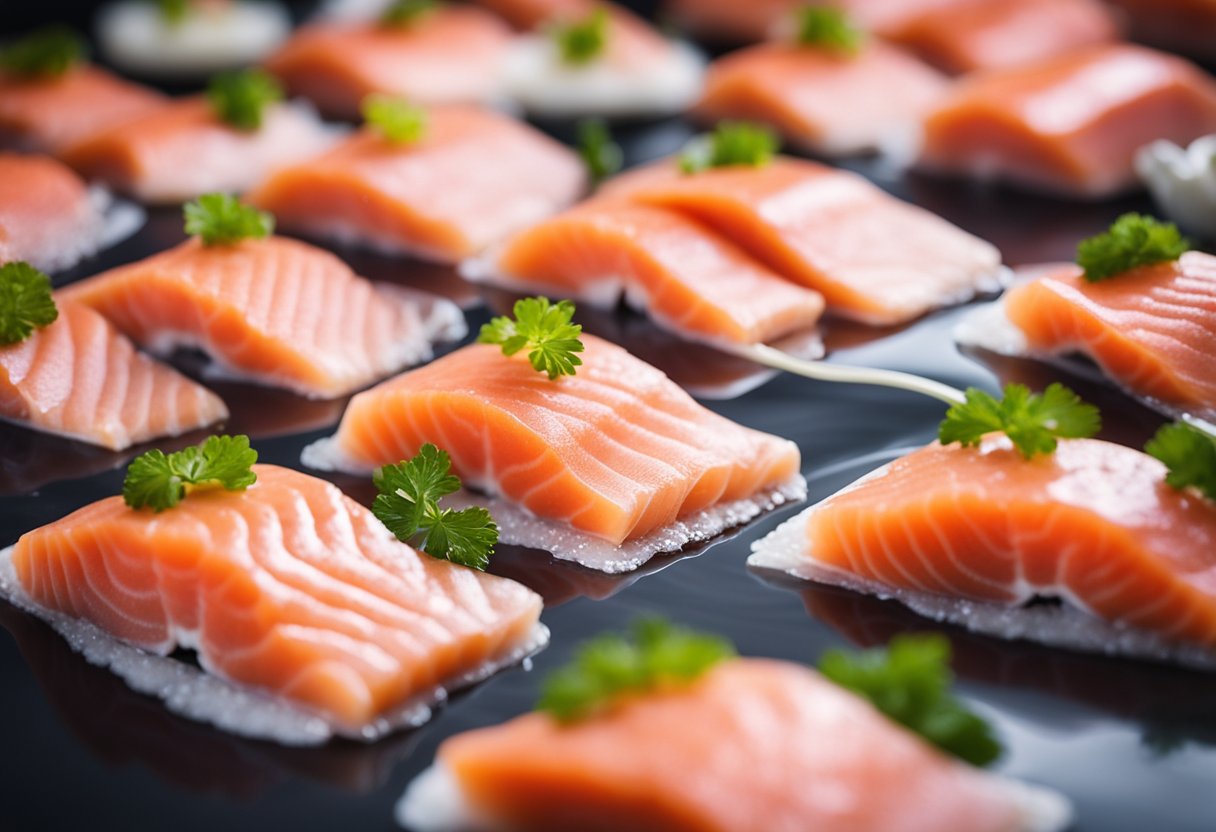
When it comes to eating raw salmon, there are some important health and safety considerations to keep in mind.
While raw salmon can be delicious, it can also be risky if not handled and prepared properly.
One of the biggest concerns with raw salmon is the potential for harmful bacteria. Salmon can contain a variety of bacteria, including Salmonella and Vibrio, which can cause foodborne illness if consumed.
To reduce the risk of illness, it’s important to only eat fresh salmon that has been properly stored and handled.
Fresh salmon should have a mild, ocean-like smell and firm flesh. If the salmon smells fishy or has slimy or discolored flesh, it may be spoiled and should not be consumed.
When buying salmon, make sure to purchase it from a reputable source and ask about its freshness.
To reduce the risk of harmful bacteria, it’s also important to properly clean and prepare the salmon. This includes removing any bones and skin, and washing the flesh thoroughly with cold water.
It’s also a good idea to freeze the salmon for at least 24 hours before consuming it raw, as this can help kill any potential bacteria.
While raw salmon can be delicious, it’s important to err on the side of caution when it comes to food safety.
If you’re unsure about the freshness or safety of the salmon, it’s best to cook it thoroughly to reduce the risk of food poisoning.
Nutritional Value of Raw Salmon
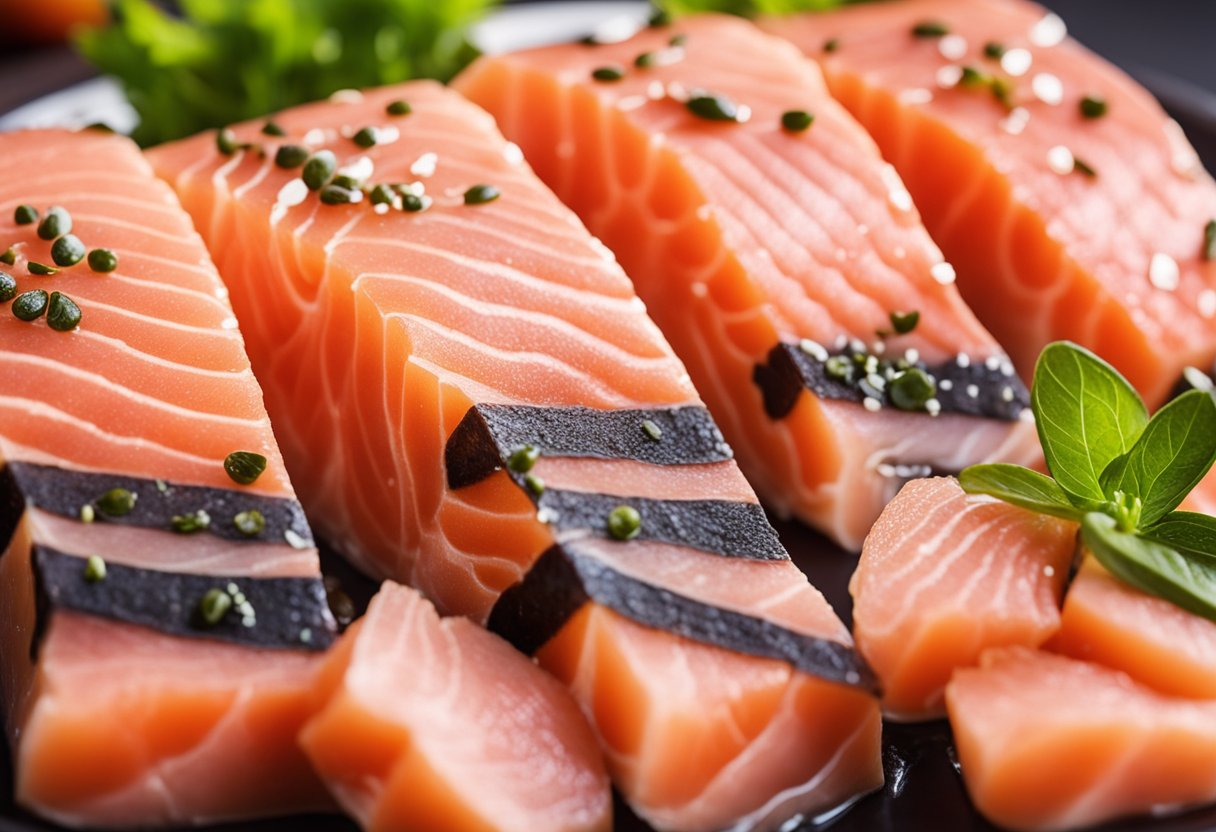
Raw salmon is not only delicious but also packed with essential nutrients that are beneficial for overall health.
It is a great source of protein, omega-3 fatty acids, vitamin D, and selenium.
A 100-gram serving of raw salmon contains around 20 grams of protein, which is essential for building and repairing tissues in the body.
Additionally, salmon is a good source of omega-3 fatty acids, which are essential for brain function, reducing inflammation, and improving heart health.
Raw salmon is also rich in vitamin D, which is essential for maintaining strong bones and teeth.
A 100-gram serving of raw salmon contains around 600-1000 IU of vitamin D, which is more than the recommended daily intake for adults.
Furthermore, raw salmon contains selenium, a mineral that plays a vital role in maintaining thyroid function and boosting the immune system.
A 100-gram serving of raw salmon contains around 40-50 mcg of selenium, which is about 70% of the recommended daily intake.
It is important to note that while raw salmon is rich in essential nutrients, it can also contain harmful bacteria and parasites.
It is recommended to consume only high-quality, fresh, and properly stored raw salmon to minimize the risk of foodborne illnesses.
In conclusion, raw salmon is a nutrient-dense food that is not only delicious but also beneficial for overall health.
It is a great source of protein, omega-3 fatty acids, vitamin D, and selenium, which are essential nutrients for the body.
However, it is important to consume raw salmon safely to avoid the risk of foodborne illnesses.
Frequently Asked Questions
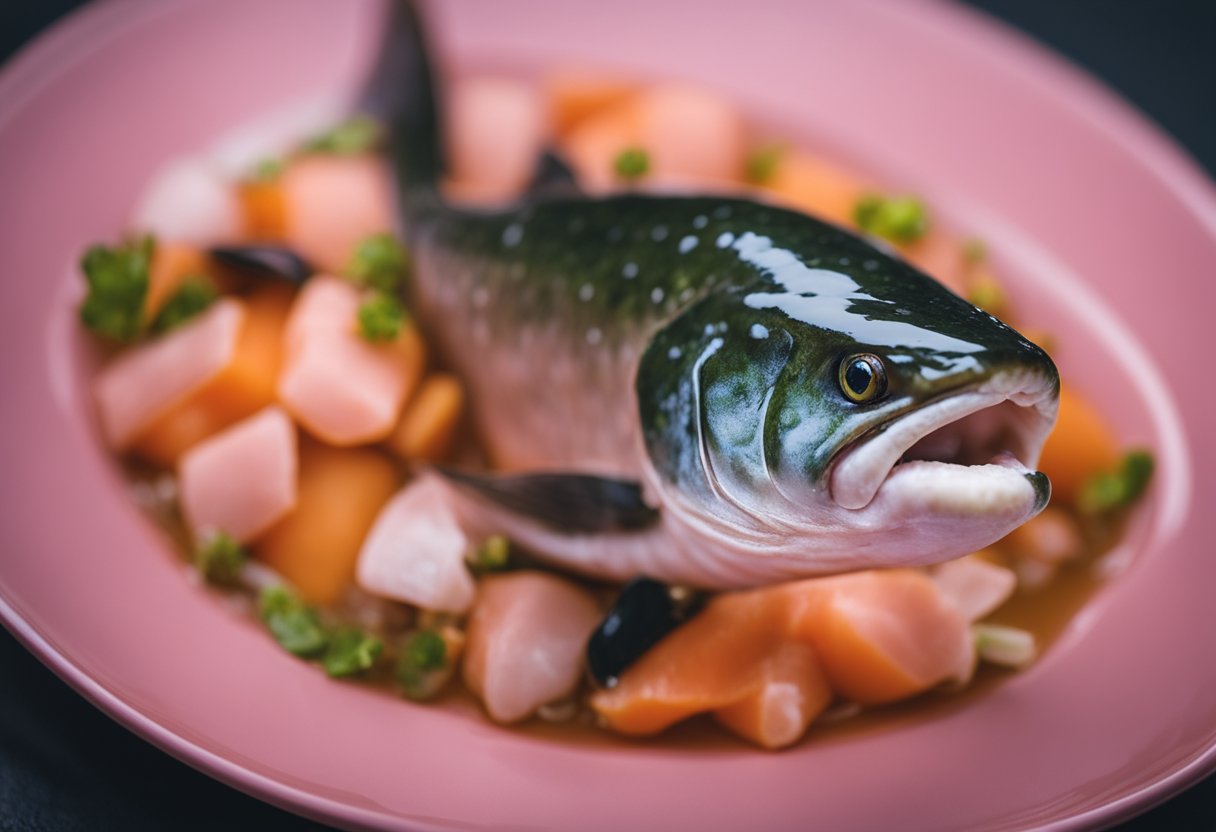
How does raw salmon taste compared to cooked salmon?
Raw salmon has a delicate, buttery texture that melts in your mouth. The taste of raw salmon is milder than cooked salmon, with a subtle hint of sweetness.
The flavor of raw salmon is affected by factors such as the fish’s age, diet, and quality. Cooked salmon has a firmer texture and a stronger flavor than raw salmon.
The cooking process changes the texture and taste of the fish, making it less delicate and more robust.
What are the health benefits of eating raw salmon?
Raw salmon is a rich source of omega-3 fatty acids, which are essential for brain function and heart health. It is also high in protein, vitamins, and minerals, including vitamin D, vitamin B12, and selenium.
Eating raw salmon can help reduce inflammation, lower blood pressure, and improve brain function.
Can you get sick from eating raw salmon?
Raw salmon can contain harmful bacteria, such as Salmonella and Vibrio, which can cause food poisoning.
To reduce the risk of getting sick from eating raw salmon, it is important to buy fresh, high-quality fish and to handle it properly.
Freezing the fish for at least 24 hours before eating it can also help kill any harmful bacteria.
What is the texture of raw salmon?
Raw salmon has a unique and pleasant texture. Different sections of the fish flesh have also been studied, showing the tail region to be the stiffest part of the salmon.
The texture is firm but tender, making it perfect for slicing into thin strips.
Why is raw salmon a popular dish?
Raw salmon is a popular dish because of its delicate flavor, unique texture, and health benefits. It is a traditional ingredient in Japanese cuisine, where it is served as sashimi or sushi.
Raw salmon is also used in many other dishes, such as ceviche, poke bowls, and tartare.
What are some popular ways to prepare raw salmon?
There are many popular ways to prepare raw salmon, including sashimi, sushi, ceviche, poke bowls, and tartare. Sashimi is thinly sliced raw fish that is often served with soy sauce and wasabi.
Sushi is a dish that includes raw fish, rice, and other ingredients, such as vegetables and seaweed. Ceviche is a dish that includes raw fish marinated in citrus juice.
Poke bowls are a Hawaiian dish that includes raw fish, rice, and vegetables. Tartare is a dish that includes finely chopped raw fish mixed with herbs and spices.







